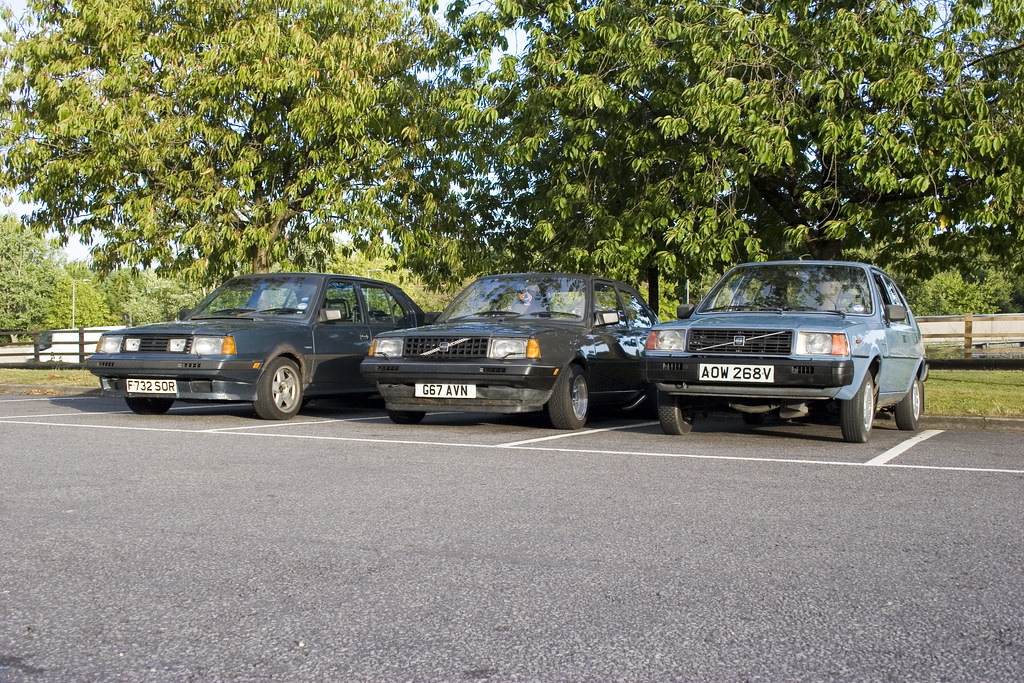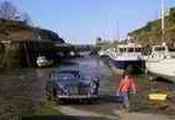this will be a DIY guide on building yourself a set of coilovers for less than the price of lowering springs
anyway Ill start with the bits you need first:
- Pair of Volvo struts/Hubs
- Pair of budget ebay Coilovers, i used mk2 golf ones (note: these are the same as 6n2 vw polo struts, b4 passat ones can be used too, theyre just 50mm longer*i think*) you can probably contact the seller on ebay of new ones direct and order just the front pair.
i got a complete set of golf coilovers for £60 from clubpolo.co.uk sign up and scour their classifieds! great for cheap wheel and audio too (not a plug just being resourceful - you have to register to /b/rowse)
note the rear coilovers can be sold on to someone with a polo - they fit mk2 polos, mk2fs etc etc I did this and got £30 back. (they provide a lot of slammage so help a friend with a polo out in the process
- 3/4"ID spherical bearing, these ones: http://www.ebay.co.uk/itm/Spherical-Bea ... 701wt_1065
please note however, they now stock a few more sizes since ive built mine so its worth measuring the damper tube width and then going from that - i ordered 3/4" because that left some room to place a spacer between the damper tube and bearing to help spread the load.
- 3/4" housing: http://www.ebay.co.uk/itm/Spherical-Bea ... 719wt_1164
- 3/4" circlip: (cant find the link, they are there though)
the above is all you need really, a bit of 4mm steel plate too and some tube with a 2.25"ID to make your spring locators.
first, get these to bits.


i binned the dust shields as they were pretty rusty and looked ugly.
you will want to cut the tubing off the volvo struts (after stripping them down):

cut as close to the casting as you can, this will make it easier later on.

please note - if there is a more efficient method for the following procedure of removing the original damper housings from the castings let me know/add it to here as this method was a pain in the arse.
once thats done, you can begin chain drilling the dome out of the casting:

once its all knocked out, get a hacksaw, remove the blade and thread it through the hole you are left with. you want to cut the tube in the casting into 6 or so equal sections - cut all the way untill youre through to the casting. but be careful and try to minimize damage to the casting itself.
once youve cut the tube thats inside the casting into sections. pop the hub assembly/whatever you want to call it into a vice, get a chisel and a weighty hammer and start bashing one out, then another, etc etc.
eventually youll be left with something similar to this:

hopefully, it will be in better quality and if your chain drilling was spot on there will be less work for you. although i must say the dome at the bottom of the tube did make it difficult to chain drill consistently. basically, using a dremel you can get rid of the remaining unneeded metal. and then use a grinding disc (or dremel - i didnt have a dremel to hand, motorsport engineering college my ass haha) to take away some casting to leave plenty of space for the weld to go into. I dont have a picture of this bit, but you should know what im on about anyway - if not, its probably best you let a friend do this part for you.
Once the hub castings are ready, start work on the coilovers themselves.
first you want to strip them down - i removed the inserts from the housings by placing the captive nut section into a vice then undoing them. It is important you do this because the heat from the angle grinder and then the welder can potentially damage the insert damper. its also a heck of a lot easier to work on these when theyre just an empty tube
again i havent got the best of photos, but you should get the jist of things anyway. you want to get a cutting disc on a grinder then gently start cutting into the welds that hold the mounting bracked to the main body of the coilover.

hopefully you can see where the cut is - if you take it slowly and tap it with a hammer you will eventually see cracks - these indicate the end of the weld and the beginning of the housing tube itself. you want to leave it there and move on to the next area of the weld,

then once youre all done jsut use a lever bar or a hammer and chisel and you're off!

then use a flap wheel to grind the remainder of the welds flat. go over the whole damper to get rid of the protective coating, or in my case rust!
you will have to go over the whole tube to make sure it fits snugly. then using a rubber mallet, simply tap it in! i did mine so it sits roughly the same distance into the casting as the standard damper.


All thats left to do now is the welding. then you can get onto making the top caps.
so turn the welder up to max (i used 160amps for this weld iirc) keep the torch on the casting, briefly sweeping over to the tube itself. this will get VERY hot but its essential to get a strong enough bond with the cast. just try your best not to blow holes in the tube - my technique of just going for it worked well enough, resulted in this:


weld them top and bottom for optimum strength - mine have withstood a run in with a roundabout at higher than average speed and all is straight and good
Now you need to make the top caps.

these are easy to do, firstly, make the spring locators/caps. these have a secondary role too - they provide a mount for the lower top hat shim that will go between the bearing and the damper tube.

get some steel tubing, i used 3mm thickness and cut it into 7-10mm lengths. 7mm is plenty it just has to sit inside the spring a little bit.

i used a band saw to get relatively straight cuts.
dont have pictures of the next bit, but you just need 3 or 4mm steel plate, and mark out a circle on them thats the diameter of the spring itself, so 2.5" or so (never actually measured mine, just made them
i used a guillotine to cut them to the rough round shape then welded the rings to them.

these dont need strong welds so 3 even ones spaced similar distances from each other did the job.
after the ring is welded on, you can pop them into a lathe and spin them down to a nice round size. luckaly for those of you with access to a lathe, its 90% likely to be better than the one at my college,(1 -2mm of play on the one i used
now you can start on the upper bit, use the standard mount to mark out the 3 bolt holes. (i dont really have pictures of the remaining process but its quite straight forward and chances are if you got this far, you can figure out the rest without too much difficulty.)
so anyway, 4mm steel plate, mark out a circle, get the center marked up, mark out the 3 holes - drill them out, tap them with a thread, job done. popped the two into a lathe afrer to get them semi round. (i wasnt bothered by appearance/quality by this stage i just wanted them done)
then measure the bearing housing youve got. the External diameter of it, and mark out a hole in the metal caps youve already started on. i decided to weld the housing through it rather than on it as this gave me more room for weld which meant more strength.
when you are welding the housing on, make sure you take your time, my welds dont look very good in the picture because i only did them in 10mm sections at a time, on maximum power. also dont forget to put a taper on the hole you cut into the plate - more room for the weld
when welding this bit, do one weld on one cap, then a weld on the other. leave it a minute, repeat process - weld evenly (so one weld, weld on the opposite side, in the middle of them, etc etc) for best results place it onto a massive bit of copper as that works as a good heatsink. then once one weld is done, flip it over and do the same on the underside, again its important you take your time as the housing can potentially distort then your bearing wont fit in and youll have to start over.
once theyre welded up, chuck em in the vice and the welds on the underneath just machine them flat, alternatively use a grinding disc, just take more care.
the next bit is time consuming, you basically need to make shims that go between the damper tube and the bearing - i dont have pictures of these however i will get some and add them later, or ill do a diagram (im supposed to be finishing a college writeup on this but instead im doing it here. failing life 2k12.)
the shims need to be in two parts. use a solid bar of steel, about 23 mm or so in diameter - machine one section so it can be welded to the spring location cups you made earlier. then the top part of it, spin it so the bearing sits on a step and then has 5mm of material going inside the bearing between the damper tube and the inner part of the bearing itself. sleeve is the word im looking for i think. then make the part that will go into the top - it only needs to be a 10 - 12mm tall. have 6 -7 mm of it as the sleeve part going inside the bearing, make sure you leave a mm or so of a gap between the upper and lower sleeve - you dont want these to touch as when you do up the damper top bolt they will just compress and push against eachother but the damper will still be free to move up and down. (i know its obvious, but making it clear). once youve made those just put it all together and enjoy i guess.

there we go, first guide ive ever done i think. its very vague but w/e for half hours typing it will have to do! hope its understandable, if anyone wants to copy paste this and make it clearer/add their own experiences go ahead, lets make it a team effort








